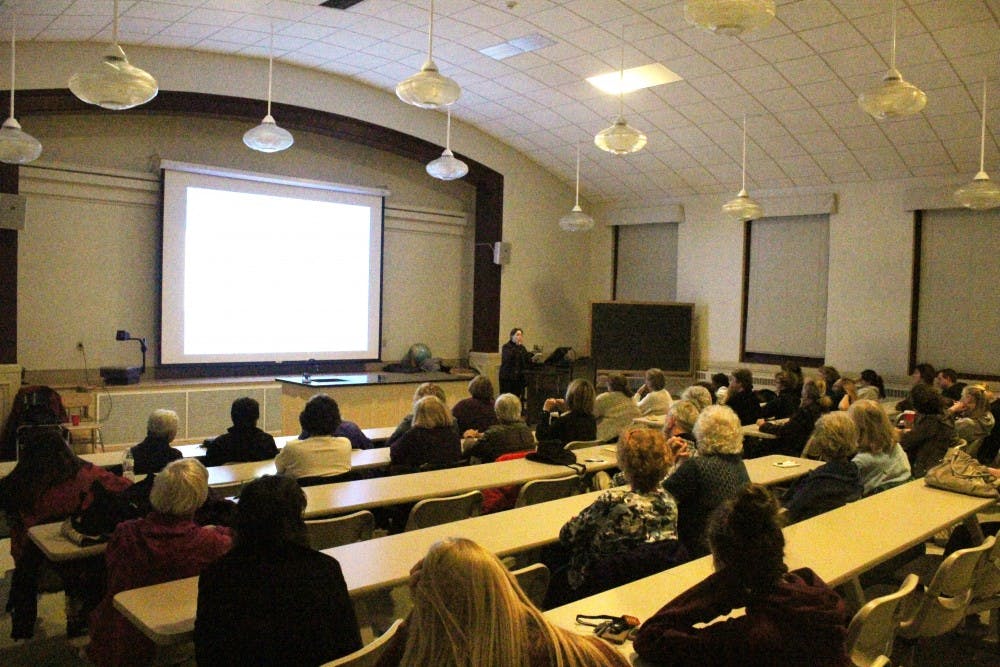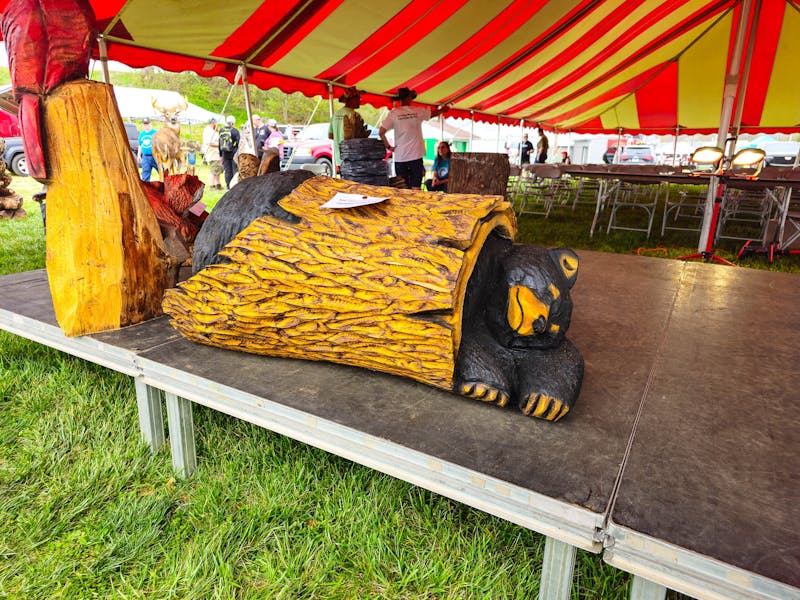A. Newbold “Newbie” Richardson, a material cultures historian, presented a lecture at Shippensburg University’s Rowland Hall on Thursday to students and community members about the history of material crafts in the U.S.
Her lecture, “Quilts in Context: Women’s History, Craft and Material Culture in America,” focused on the history and design of quilts.
“I love quilts,” Richardson said as she spoke about the decorative arts design influences of quilts. “Sewing was an endless, constant, tedious chore. It was vital.” Everything was made of fabric.
Quilting dates back almost 4,000 years, according to Richardson, who showed the audience painted and printed cloths from India from 1600-1780. The Native Americans were so involved in the fabric industry that it hurt the British silk industry. The English favored the floral designs of the Indians.
“Floral decoration is a vehicle for a kind of spiritual ideal,” Richardson said.
Along with Indian floral design pieces, she showed several others, including “Basket of Flowers,” a Palampore from circa 1690, “The Grand Tier,” mosaic tiling in the Chapel of Madonna and a map dissection, which was the first puzzle used to teach children geography in schools. Quilt designs influenced home decorations as well, such as on motifs, baskets, dresses and other furniture. Many pieces were seen with swags and bowknots, eagles, compass roses and maps. Richardson emphasized patchwork as well, which was decorative needlework.
“Today, patchwork is the craft of choice for over 16 million women today,” Richardson said.
It is a $3.75 billion industry, saving independent fabric stores from being shut down. She emphasized how quilting is a craft, saying it is part of a spider web of design.
In the 18th century, there was a change in attitude toward women’s education, which influenced something called “School Girl Art,” according to Richardson. These were painted and embroidered pieces with watercolors. Closer to the mid-1800s, album quilts were made for scrapbooks sold in stores. Women would write poems, signatures and engravings in these albums. Soon after, the “Fancy” Movement began in the decorative arts. Stores in London were called “Fancy” stores because of the bold and exuberant designs they sold.
One very important decorative art called “The Kaleidoscope” captured imagination in 1800’s just as smart phones capture ours today, said Richardson. Kaleidoscopes were invented in 1812 and had lots of pattern and movement. The refraction of light spread like wildfire and everyone wanted one. Today, starburst quilts strongly resemble the look of kaleidoscopes.
“This lecture was very interesting to me, I did not realize how much history was behind the art of quilting,” said SU student Rachel Hefele. “My favorite part was noticing the resemblance of designs from hundreds of years ago to those designs of today.”
“Quilts became a medium to express friendship and were made as resemblances, signed by the maker,” Richardson said.




The Slate welcomes thoughtful discussion on all of our stories, but please keep comments civil and on-topic. Read our full guidelines here.